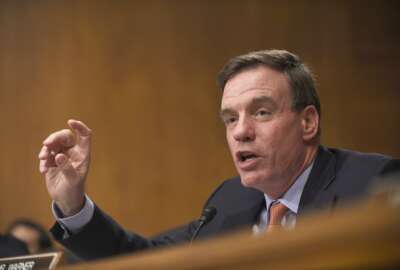
Mixed bag of progress, setbacks for agencies working to implement DATA Act
Civilian agencies are having to balance progress and setbacks as they work to implement the DATA Act by its May rollout. But financial officials admit the deadline...
Agencies who don’t meet the DATA Act’s May implementation deadline will face a fate potentially worse than federal prison: public scrutiny.
CFO Act agencies rolling out their standardized spending information might need thicker skin, as their good faith efforts under the Digital Accountability and Transparency Act won’t protect them from criticism.
“That’s the beauty of the DATA Act; it has a pretty big stick,” said Renata Maziarz, senior policy analyst at Treasury, during the AGA’s Jan. 13 Financial Systems Summit in Washington. “Your IG’s going to audit you, they’re going to find that ‘Hey, you didn’t comply with the statutory requirements.’ There’s also GAO, it’s going to say the same thing. More importantly, the public and the users are going to say, ‘OK, why can’t I see information about X? … Why can’t I see information about this, and when will I be able to see information about this?’ For executives at that agency and politicals, they have to deal with that, say ‘Well, we’re not that ready. We don’t want to show you. I don’t know.’ They’re going to have to deal with that backlash. That’s probably worse than jail.”
But from what some agency officials are saying, that’s something they’re going to have to deal with thanks to hiccups and problems preparing their agencies for the rollout.
Matthew Roper, deputy director for the Justice Department’s Justice Management Division, said in the race to get to that first May date of submission, DoJ is more the tortoise than the hare.
“It’s been a slow and gradual process for us,” Roper said.
DoJ is dealing with legacy systems, Roper said, and a lack of a single enterprisewide financial system, data that’s “not at a granular enough level” to comply with the law, and in some cases data that doesn’t actually exist.
Roper said DoJ also mistakenly assumed it could let all its different components submit their own spending information, but after finding out that it must be a single submission for the agency, that presented a whole new set of challenges.
“What we decided to do is take the approach where each of our components who know their information best, start to pull together those individual submissions, and at the department level, building a warehouse to aggregate that data together to submit on behalf of the entire agency,” Roper said.
Tyson Whitney, director of USDA’s Transparency and Accountability Reporting Division, said one of the problems with his department is having to educate some of the smaller-than-small businesses that are FSSP (Federal Shared Services Provider) clients.
“It was an outreach issue for us initially,” Whitney said. “Given how small they are, and the very narrowly focused efforts that they’re conducting, they’re generally not engaged in interagency collaboration. It’s a challenge basically to teach them all about the DATA Act. In some cases, we were teaching them about the Transparency Act, which they had not heard of. We were going over nine years worth of government implementation and rules that they were not aware of.”
The Housing and Urban Development Department really started to focus on the DATA Act in October 2015, said Joe Hungate, assistant chief financial officer for systems, but in that time, preparation is already helping the agency improve some of its reporting.
Hungate said HUD’s governance model has also been called out by its IG for years.
“We’re a very disparate department, which also leads to disparate data as well,” Hungate said. “So the governance model is very important. The DATA Act is just the latest added to the fold of sort of recrimination about not doing this well. We’ve folded that into an executive operations committee.”
But agencies shouldn’t be discouraged, Maziarz said. Her office has been working on the DATA Act since its passage in 2014, and is responsible for building the system that is collecting agency data, publishing that data, and doing outreach to help agencies as they work to implement the law. Treasury is spearheading the effort with the Office of Management and Budget.
“Agencies that have been most successful have had a good governance structure, and ones that actually leverages existing processes,” Maziarz said. “Also agencies that have focused more on the data first, and not just the technology have been successful.”
Even as agencies pass that May start date, there is worry about continuing compliance, the panelists said.
Roper said one of his worries is that DoJ ends up chasing its tail in an effort to try “to explain small inaccuracies or anomalies in the data,” especially if that isn’t a good use of taxpayer money.
Whitney said that even if agencies meet that implementation deadline, or other markers out in the future, they might not always get the credit.
For example, one set of data elements relates to “place of performance,” which labels where each grant or action took place. That might seem like a simple question to answer, but when you get into conversation work in a watershed, or a project in a national forest, or research on a space shuttle, putting the pin in the right place on a map is a much more complicated task.
“These kinds of things are not obvious to consumers of data,” Whitney said. “How do we portray accurately what’s happening in a complex environment?”
Communication is going to be critical going forward in how agencies explain the data being reported through the law, he said.
“When we present information and there are certain things that get rolled up in one way in one program and get rolled up in a different way in another program, when they try to compare the two you may find yourself in a position to say, ‘Well, this is the apple this is the orange, you cannot make that direct comparison,'” Whitney said. “Explaining our data, making it as clear as possible … I think that’s going to be a challenge, because there may be in some arenas a perception that we’re not reporting correctly. I think it may need more exposition of data, and explanation of data therein is going to be critical in the path forward to show we are in fact doing our best to comply.”
Maziarz said she wasn’t surprised by what she heard on the panel, but said Treasury is working on a site that makes it easy for agencies, Congress, media, researchers and the general public to access and review the spending information.
Treasury is doing that through a site generated off an application programming interface (API).
“We’ve been taking the approach of OK, people just want access to this data, how do we provide the least [amount of] barriers to to get them access to the data?” Maziarz said. “[We’re] creating the ability to download the data very easily and understand it pretty easily. For the public, it’ll be the first time where they can actually look at federal spending and understand it in a way they’ve never understood it before.”
Copyright © 2025 Federal News Network. All rights reserved. This website is not intended for users located within the European Economic Area.





